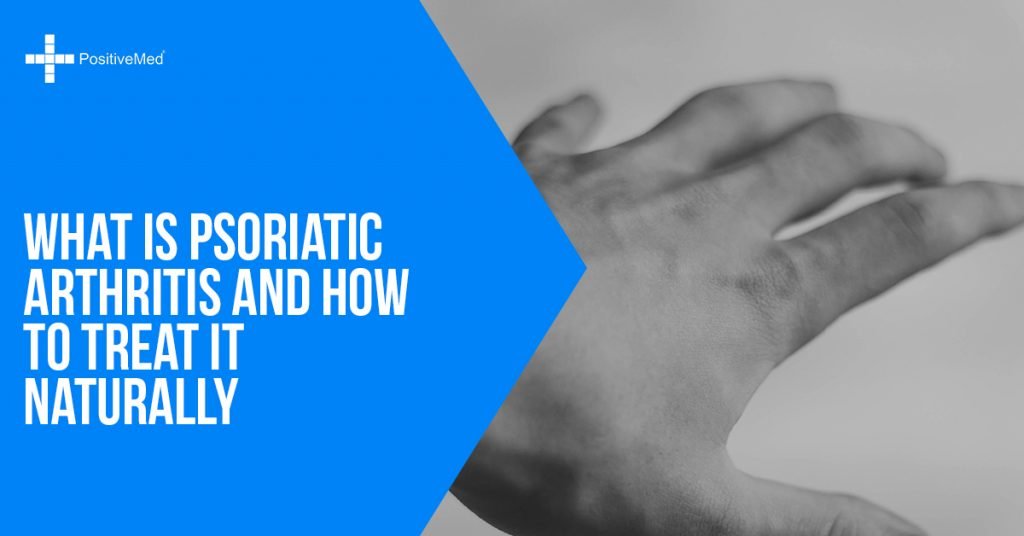Some people confuse psoriasis with psoriatic arthritis yet the two conditions are totally different. Psoriasis is a skin disease that manifests with scaly rashes, crumbling nails and causes itching. About a third of people with psoriasis develop an inflammatory type of arthritis referred to as psoriatic arthritis. This is an autoimmune condition which occurs when the body’s immune system erroneously attacks healthy tissues in muscles and joints.

Symptoms of Psoriatic Arthritis
1. Stiffness in joints and muscles
2. Joint pain
3. Swelling in toes and fingers
4. Reduced range of motion
5. Crumbling nails
6. Redness and pain of the eye, like conjunctivitis
7. Generalized tiredness
Types of Psoriatic Arthritis
• Symmetric Psoriatic Arthritis: This is the most common type and affects joints on both sides of the body.
• Asymmetric Psoriatic Arthritis: Usually mild, and don’t appear in the same joints on either side of the body.
• Spondylitis: Manifests as pain and stiffness in the neck and spine.
• Asymmetric Psoriatic Arthritis: Usually mild, and don’t appear in the same joints on either side of the body.
• Spondylitis: Manifests as pain and stiffness in the neck and spine.
• Distal Psoriatic Arthritis: Triggers stiffness and inflammation near the end of toes and fingers.
• Arthritis mutilans: It’s a rare condition though considered to be the most severe type of the condition. The hallmarks of this condition are deformities in the fingers, toes, and small joints.
Who is at Risk?
Between 10% and 30% of psoriasis patients develop psoriatic arthritis. It can strike at any age but usually attacks people aged between 30 and 50. Common risk factors include:
1. Family history of skin or joint disease
2. Injury to the skin
3. Smoking
4. Alcohol consumption
5. Emotional stress
6. Certain medications, such as lithium and beta-blockers
7. HIV
8. Hormonal changes
Related Link: The Right Way to Use Herbs for Psoriasis Treatment
Natural Treatment for Psoriatic Arthritis
Though it is a chronic condition, psoriatic arthritis symptoms can be alleviated through natural treatment. The best natural treatment options include:
1. Regular Exercise
You may not feel like exercising when experiencing the uncomfortable symptoms of the condition. However, exercise is very vital for your health. It improves flexibility and strengthens the muscles. Through exercise, you can maintain a healthy weight and put less strain on your muscles and joints. Consider lightweight exercises if hurts. Try walking, stretching, or some range of motion workouts. Let your doctor or physical trainer guide you on how to incorporate regular exercise into your daily routine.
2. Diet and Weight Control
Do you know there are certain foods that trigger the inflammatory response? In reference to a report by the Journal of Vitamin and Nutrition Research, plant-based foods can regulate the inflammatory response. Diets rich in whole wheat, fruits, and vegetables can reduce inflammation. In addition, a healthy diet can keep the extra pounds at bay. Weight gain can increase stress to your joints and hinder your ability to move.
3. Omega-3 Fatty Acids
When you ingest omega-3 fatty acids in your body, they are converted into anti-inflammatory compounds. Studies involving patients with psoriatic arthritis and other inflammatory diseases found that fish oils can decrease inflammation and tautness in joints. You can get healthy fish oils from cod, salmon, tuna, and mackerel. Arthritis Foundation recommends pregnant women to avoid king mackerel due to harmful mercury levels. You can get fish oils in form of dietary supplement. However, you should contact your doctor before starting any supplement regimen.
4. Turmeric
There are patients who report improvement of psoriasis and psoriatic arthritis symptoms after incorporating turmeric to their diet. There are many studies underway to review the anti-inflammatory properties of turmeric. This is in reference to the National Psoriasis Foundation. Turmeric can be added to almost every type of meal. You can also get it as a dietary supplement. Seek dosage instructions into your health care provider.
5. Joint Care Practices
Some of the joint care practices you can try are soothing warm bath or use the heat pad to relax stiff joints and muscles. To relieve pain in joints and muscles, use ice packs or soak in cold water. Use your entire hand rather than exerting pressure on some fingers when lifting or pushing an object.
6. Get Enough Sleep
Sleep deprivation can worsen your psoriatic arthritis symptoms. Ensure you are getting enough sleep ever night to prevent drowsiness and exhaustion the following day. Adopt a sleep schedule where you can go to bed at night and wake up the same time every morning. Avoid caffeinated beverages near the evening hours if you have a problem with falling asleep.
Conclusion
If left untreated, psoriatic arthritis can interfere with your daily chores and affect your productivity. The good news is that you there are natural ways through which you can manage its symptoms. Making healthy lifestyle choices, eating a healthy diet, and exercising regularly can help to manage the condition. Use of natural supplements with your doctor’s consent is an alternative if you can’t get some essential nutrients from regular meals. If natural approaches proof futile, you can consult your doctor for medications like NSAIDs.






